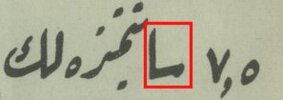Darkman
Well-Known Member
My mate Ron has this presumed Turkish shrapnel fuze. It is 58mm diameter and 58mm tall (about 2.25 inches). Diameter across the thread is 38mm (about 1.5 inches).
It is smaller than other Turkish shrapnel fuzes he has, so not sure what it's from. We would appreciate possible identification of the fuze, translation of the writing and any ideas what shell it may have been fitted to.
Thanks, Graeme
It is smaller than other Turkish shrapnel fuzes he has, so not sure what it's from. We would appreciate possible identification of the fuze, translation of the writing and any ideas what shell it may have been fitted to.
Thanks, Graeme









